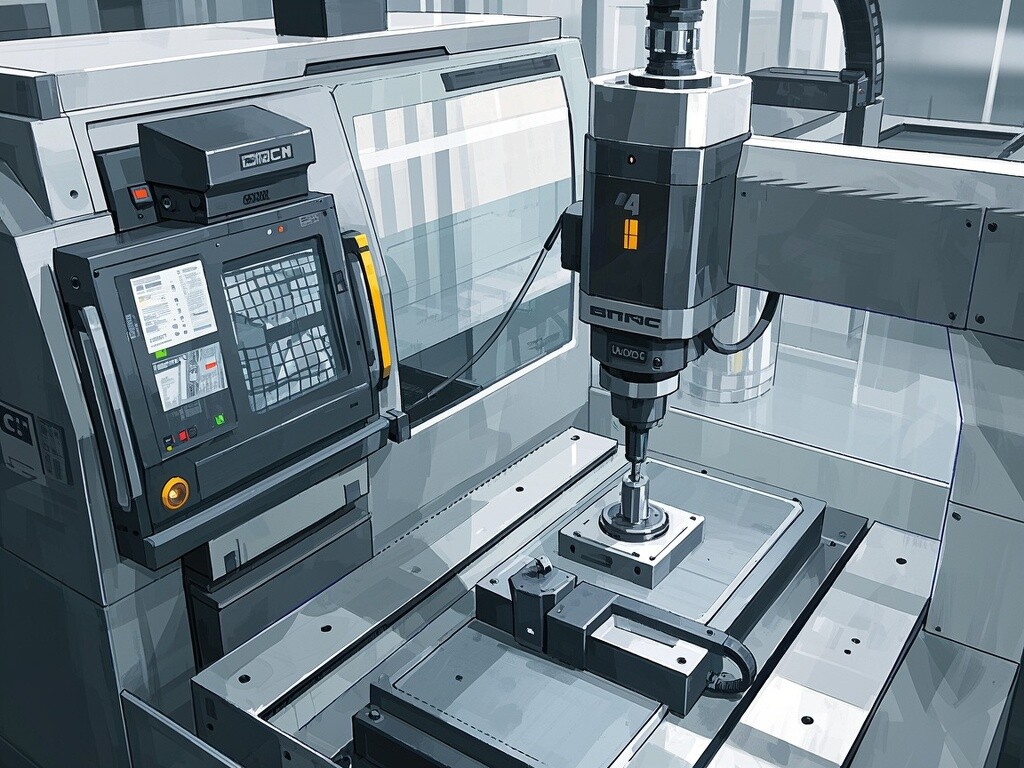
For contract teams managing high-mix, high-cadence work, CNC automation is the leading lever to cut downtime, raise throughput and ensure predictable delivery. This guide outlines practical strategies across CNC turning, milling, grinding, drilling and cutting operations to help technical, commercial and procurement stakeholders align on risk-controlled automation.
Why CNC automation matters for contract manufacturing teams
CNC automation reduces unplanned stops, standardizes quality, and frees operators for higher-value tasks. For enterprises evaluating capital and contract execution, automation of CNC machines reduces cycle time variability and improves on-time delivery—critical when multiple customers and strict SLAs are involved. Embedding automation into CNC turning, CNC milling and CNC grinding workflows protects margins and reduces labor dependence while improving traceability for audits against standards such as ISO 9001, EN and JIS.
Common pain points that cause downtime
Contract teams typically face: tool change delays, manual loading bottlenecks, inconsistent fixturing, programming errors, and maintenance unpredictability. CNC drilling and CNC cutting operations often suffer from tool wear surprises, whereas multi-axis CNC machines can experience fixture collisions or probing errors that halt production. Identifying the root cause—process, machine, or human—lets teams design targeted CNC automation solutions.
Core strategies to avoid downtime
1. Machine selection and cell design
Select CNC machines with the right automation readiness: robust tool changers, integrated probes, standard communication protocols (MTConnect, OPC-UA) and support for pallet or gantry automation. For turning operations, choose CNC lathes with live tooling and quick-change chucks. For milling and complex parts, ensure the CNC machines support pallet pools and robotic tending to enable lights-out operation.
2. Standardized tooling and fixturing
Standardize collets, modular fixtures and toolholders across families. Standardization reduces setup time and tool change errors in CNC turning and CNC milling. Use quick-change fixturing and kitting to speed job changeovers; this practice especially benefits contract environments with frequent part swaps.
3. Robust process monitoring and predictive maintenance
Instrument CNC machines for vibration, spindle current and coolant flow monitoring. Predictive analytics identify trends before failure, cutting reactive downtime. For CNC grinding and CNC drilling, monitoring wheel wear and feed torque provides early warnings. Integrate machine telemetry with a CMMS to automate maintenance windows and spare part management.
4. Automation of material handling
Automate loading/unloading with collaborative robots, gantries, or pallet pools to reduce manual intervention. Automated separators, conveyors and vision systems minimize part misfeeds that stop CNC cutting and CNC milling cells. Where appropriate, adopt automated tool changers and robotic tool pre-setters to ensure continuous operation.
5. Digital twin and offline programming
Use digital twin and simulation for process validation. Offline programming for CNC turning and CNC milling reduces on-machine setup time and collision risk. Simulating toolpaths and cycle times supports accurate capacity planning for contract commitments.
6. Standard operating procedures and operator training
Comprehensive SOPs combined with focused operator training lower human-error related downtime. Train operators in quick recovery—restart sequences, probing routines and tool-change verification—so that minor stoppages do not escalate into prolonged downtime.
Cost-benefit and procurement considerations
When evaluating capital for CNC automation, assess total cost of ownership (TCO): machine uptime improvement, labor reallocation, parts-per-hour gains and reduced scrap. For contract teams, calculate ROI using metrics such as reduction in setup hours per job, increase in first-pass yield and improved OTD (on-time delivery). Financial approvers should require scenario analyses that show conservative and aggressive projections of downtime reduction tied to automation investments.
Standards, validation and quality control
Adopt standardized metrology and validation: repeatable probing cycles, SPC integration and traceable inspection reports. Align process documentation to ISO 9001 and consult applicable ASTM or JIS specifications for material and inspection tolerances. This reduces delays from rework and supports faster customer approvals during contract execution.
Case-based implementation roadmap
Start with a pilot cell focusing on the highest-impact process—often the bottleneck operation identified via value-stream mapping. Typical roadmap phases: assessment and KPI definition, pilot automation deployment (robotic tending, palletizing or bar feeding), data integration, operator upskilling, and scale-up. Measure MTBF/MTTR improvements and record lessons for broader rollout.
Common misconceptions and pitfalls
Automation is not a cure-all. Pitfalls include underestimating changeover complexity, ignoring spare-parts logistics, and failing to integrate CNC machines into shop-floor IT systems. Avoid over-automation for low-volume jobs; instead, apply modular automation that scales with demand.
How to choose vendors and partners
Evaluate suppliers on proven cycle-time improvements, integration capability (OPC-UA, MTConnect), service response times, spare part reach and training programs. Request references from contract manufacturers who operate similar CNC machines and ask for measured uptime improvements. In procurement documents, require clear acceptance tests tied to downtime or throughput targets.
Why choose us and next steps
We combine hands-on experience across CNC turning, CNC milling, CNC grinding and robotic automation with a practical, ROI-driven approach to reduce downtime for contract teams. Our team helps specify automation-ready CNC machines, design cell layouts, connect machine telemetry and train operator teams. For a tailored assessment and pilot plan, contact our automation specialists or review our implementation case studies. See a sample solution: 无.
Quick checklist for contract teams
- Map your bottleneck processes and quantify downtime causes.
- Prioritize machines with automation-ready features (tool changers, pallet systems, OPC-UA).
- Standardize tooling/fixture kits and implement offline programming.
- Instrument machines for predictive maintenance and integrate with CMMS.
- Run a pilot, measure conservative KPIs, then scale modularly.
By focusing investments where they deliver measurable MTBF and throughput gains, contract teams can substantially reduce unplanned stoppages across CNC machines, improve capacity predictability, and strengthen customer confidence. Implement the strategies outlined here to transform downtime into competitive advantage and ensure contract fulfilment with confidence.

